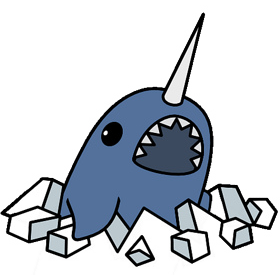I have just spent twelve days in bed recovering from food poisoning with added complications. Twelve days. Forced downtime makes you think about things that you usually don’t examine, but I’ve had a lot of time to think.
What does it mean to feel joy, let alone share it, when every day seems to bring a new wave of terrible news? What does it mean to make things slowly when the world seems be buried under an avalanche of new, shiny things? What does it mean to sit quiet at home, connecting with other souls in remote corners of the world, when your local community is struggling?
I took up knitting again in early 2008 when I had a prolonged stay in bed. The activity gave me a sense of achievement, a sense of agency. I could not dress myself but I could make a scarf. A scarf became a hat became a sock became a cardigan (and by the time of the cardigan I could dress myself again). I made friends through knitting, I became part of a community, and before long I was working for a yarn company.
Somewhere along the way I stumbled into designing and writing knitting patterns. I taught workshops for the yarn company. I blogged about knitting. I was on social media discussing knitting. I was part of many, many knitting groups. And then in 2014 I began doing all this as a full-time job for myself. I travelled to exciting places, met wonderful people, gave papers at academic conferences, and I even ended up writing a book.
Despite all those hours devoted to the practise of knitting, despite all the hours I’ve spent examining the act of knitting, I don’t think I’ve ever really thought about the importance of joy. And I don’t know why.
Sometimes I feel emotionally unequipped to deal with making. In recent years I have used making as a way to deal with family loss, but I end up not feeling able to look at the finished pieces afterwards (an aside: not great when you make for a living - there are several pieces I will never show you, let alone publish). Things I make to keep myself occupied become things I cannot stand to look at afterwards. I’m a utilitarian maker and the thought of having made things I’ll never use pains me. Making becomes a distraction, not the central act. I am not sure I like this.
In a world where we are constantly fed pictures of perfection — yes, even on the amateur making end of things — there is something liberating about a slightly misshapen cookie, a cable that is crossed the wrong way, a painting where the nose isn’t quite right, and a quilt where the pieces are not perfectly aligned. These pieces express the joy of making in a way that carefully staged social media posts don’t. They are less about impressing the outside world, and more about being moved by what our hands are capable of doing with simple tools.
I will freely admit that sometimes I wonder what the point of making is when the world is full of bleak news. Making a woolly hat feels frivolous when basic human rights are revoked, people are killed, and the world is experiencing one natural disaster after another. And yet making a woolly hat reminds me that I do have agency and I do have power. I cannot stop bad things from happening, but I can make good things happen through small acts of my own. I can find joy and peace when the media insist I must be scared. I can reach out to near-strangers and share kindness through making.
Joy is and must be a central part of making. Because making creates something out of nothing. Making transforms the world. Making gives us agency. Making is a radical act, a declaration that you possess the power necessary to bring about change. Making should be full of joy on the most personal level possible.
The world might not have “neither joy, nor love, nor light, nor certitude, nor peace” (to quote Matthew Arnold) but as makers we need to seek the joy, the love, the light, the certitude, and the peace we create through our chosen form of making.
I think we forget about the simple joy of a well-made hat that keeps us warm when the world is cold. I know I had. Sometimes it is good to stop, take stock, and realise what is important to us.




